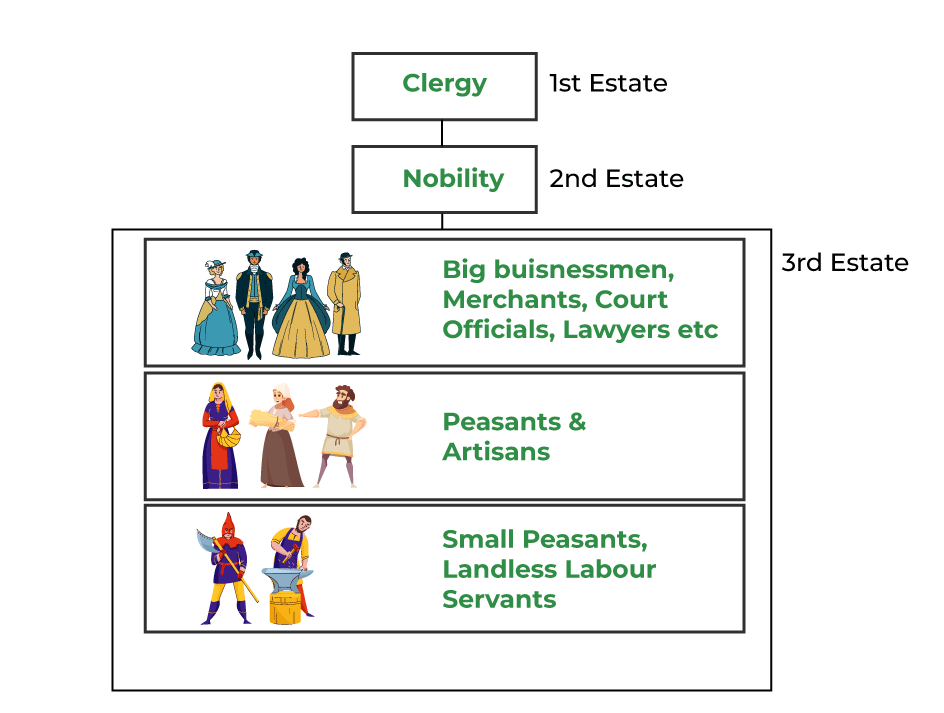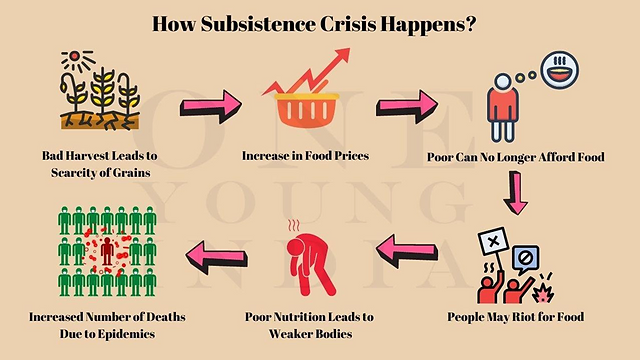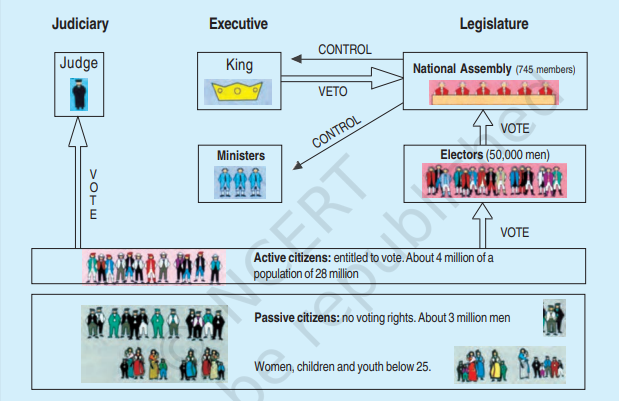
French Revolution
Overview
On July 14, 1789, Paris was on high alert due to the king's orders to enter the city. A militia of 7,000 people gathered in front of the town hall, storming government buildings for weapons.
They attacked the Bastille, a fortress prison, and killed the commander. The Bastille was dismantled, and its stone shards were sold as mementos.
The subsequent riots were protesting the high cost of bread. Historians viewed this as the beginning of a series of events leading to the king's death in France.
French Society in the Late 18th Century
In 1774, Louis XVI of the Bourbon family ascended the throne of France, a 20-year-old married to Austrian princess Marie Antoinette. The French government faced financial challenges due to long wars and the cost of maintaining an extravagant court at Versailles. The war added over a billion livres (currency) to the debt, forcing the French government to increase taxes to cover regular expenses.
Estates in French Society
 In the eighteenth century, French society was split into three estates, with only members of the third estate paying taxes.
In the eighteenth century, French society was split into three estates, with only members of the third estate paying taxes.
- The estate society was a feature of the feudal system that existed throughout the Middle Ages. The phrase "Old Regime" is commonly used to characterize French society and institutions prior to 1789.
- Peasants made up around 90% of the population. However, just a few of them owned the land on which they farmed.
- Nobles, the Church, and other wealthy members of the third estate held over 60% of the land.
- Members of the first two estates, the clergy, and the nobility, were born with particular advantages.
- The most important of these was freedom from paying state taxes.
- The nobles also had feudal privileges. They collected feudal dues from the peasants as part of this.
- Peasants were obligated to perform duties for the lord, such as working in his home and fields, serving in the army, or helping to build roads.
- The Church, too, demanded tithes (tax levied by the church, 1/10 of total produce) from the peasants, and lastly, all members of the third estate were required to pay state taxes.
- These included a direct tax known as taille, as well as a multitude of indirect levies paid on ordinary items such as salt or cigarettes.
- The burden of supporting governmental operations through taxes was solely borne by the third estate.
How did the subsistence crisis start?
France's population increased from roughly 23 million in 1715 to 28 million in 1789. This resulted in a significant surge in demand for food grains. Grain production was unable to meet demand. As a result, the price of bread, which was the majority's primary diet, skyrocketed. The majority of workers were engaged as laborers in workshops whose owners set their salaries. However, wages did not keep pace with inflation. As a result, the gap between the affluent and the poor grew.
When the crop was diminished due to drought or hail, things became worse.
As a result, France experienced a subsistence crisis, which was common during the Old Regime.

Source- One Young India
The Middle Class's Journey Towards Equality
- In the past, peasants and workers revolted against taxes and food scarcity, but they lacked the means and programs to change the social and economic order.
- The 18th century saw the emergence of the middle class, which earned wealth through overseas trade and the manufacture of goods like woolen and silk textiles.
- These educated individuals believed that no group should be privileged by birth and that their social position depended on merit.
- Philosophers like Locke and Rousseau proposed a society based on freedom, equal laws, and opportunities for all. These ideas were discussed in salons, coffee houses, and newspapers, with the American Constitution being an important example for political thinkers in France.
The outbreak of the Revolt
How France Became the Constitutional Monarch
- In France under the Old Regime, the monarch had limited power to impose taxes.
- Instead, Louis XVI had to call a meeting of the Estates General to pass proposals for new taxes. The last time this was done was in 1614.
- In 1789, Louis XVI convened an assembly of the Estates General to consider new tax proposals.
- The first and second estates each sent 300 representatives, with the third estate sending 600.
- The third estate demanded that voting be carried out by the entire assembly, a democratic principle proposed by philosophers such as Rousseau.
- The third estate representatives declared themselves a National Assembly and swore not to disperse until they drafted a constitution for France that limited the monarch's powers.
- The National Assembly was drafting a constitution at Versailles, while France experienced turmoil due to a bad harvest and rising bread prices. Angry women stormed bakeries and destroyed the Bastille on July 14.
- Rumors of brigands were spread, leading to peasants looting grain and manorial records. Many nobles fled, many migrating to neighboring countries.
- Louis XVI recognized the National Assembly and accepted the principle of a constitution.
- On August 4, 1789, the Assembly passed a decree abolishing the feudal system of obligations and taxes and forced clergy members to give up their privileges.
- Tithes were abolished, and lands owned by the Church were confiscated, resulting in the government acquiring assets worth at least 2 billion livres.
- In 1791, the National Assembly finalized the drafted constitution.
|
Constitution of France, 1791
|
The figure below shows how the political system worked during the Constitution of 1791.
The journey of France from Monarch to Republic
- The French Revolution in 1792 was marked by tensions between Louis XVI and the King of Prussia, who secretly entered into negotiations with the King of Prussia.
- The National Assembly declared war against Prussia and Austria, leading to thousands of volunteers joining the army.
- The Marseillaise, a patriotic song, became the national anthem of France.
- The revolution brought losses and economic difficulties to the people, with many believing it needed to be carried out further.
- Political clubs, such as the Jacobins, became important rallying points for discussing government policies and planning their own actions. The Jacobins, led by Maximilian Robespierre, were mostly from less-prosperous sections of society, including shopkeepers, artisans, servants, and daily-wage workers.
- In 1792, they planned an insurrection against the king, leading to the imprisonment of the royal family and the establishment of the Convention.
- The Convention abolished the monarchy and declared France a republic, with no hereditary monarchy.
- Louis XVI was sentenced to death on the charge of treason and executed publicly at the Place de la Concorde on January 21, 1793.
|
Reign of Terror (1793-1794): Robespierre's Radical Rule |
|
Directive rules of France
|
Women's Role in the Revolution
- Women played a significant role in the revolutionary changes in French society, working as seamstresses, laundresses, and domestic servants. They had limited access to education and job training, and their wages were lower than men's.
- To voice their interests, women started political clubs and newspapers, with the Society of Revolutionary and Republican Women being the most famous.
- Their main demands were for equal political rights for women, and they demanded the right to vote, be elected to the Assembly, and hold political office.
- The revolutionary government introduced laws that improved women's lives, including compulsory schooling, marriage, divorce, and job training.
- However, women's struggle for equal political rights continued, with the Reign of Terror resulting in the closure of women's clubs and banning of their political activities.
- The fight for voting rights and equal wages continued worldwide, with an international suffrage movement during the late nineteenth and early twentieth centuries.
- In 1946, women in France won the right to vote, marking a significant milestone in their history.
Abolition of Slavery
- The Jacobin regime revolutionized social reforms by abolishing slavery in French colonies, which supplied commodities like tobacco, indigo, sugar, and coffee. This led to a triangular slave trade between Europe, Africa, and the Americas.
- The trade began in the 17th century, with French merchants buying slaves from local chieftains and selling them to plantation owners.
- Despite debates about extending human rights to all French subjects, the Convention in 1794 legislated to free all slaves in French overseas possessions.
- However, this was short-lived, as Napoleon reintroduced slavery ten years later. The abolition of slavery in French colonies was finally achieved in 1848.
End of the French Revolution
- In 1795, the National Convention passed France's first bicameral constitution, creating France's first legislature. The Directory, led by Napoleon Bonaparte, faced financial difficulties, social dissatisfaction, and political corruption.
- By the late 1790s, the Directory had outsourced power to field commanders, and Bonaparte mounted a coup, dissolving it and claiming himself France's "first consul" on November 9, 1799.
- This event marked the end of the French Revolution and the beginning of the Napoleonic era, allowing France to control most of continental Europe.
- Napoleon Bonaparte, Emperor of France in 1804, aimed to conquer neighboring European countries and modernize Europe by introducing laws like private property protection and the decimal system.
Initially seen as liberators, Napoleon's armies were viewed as invaders. His revolutionary ideas of liberty and modern laws impacted people throughout Europe, leading to the abolition of feudal systems and the creation of sovereign nation-states. Tipu Sultan and Rammohan Roy were notable individuals who responded to these ideas.


